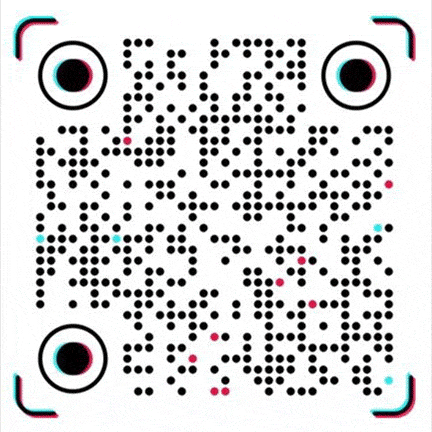PMMA: Transparent Polymer Applications
Polymethyl Methacrylate (PMMA) is a transparent thermoplastic polymer material with a long history and wide application. It is often called "plexiglass" or "acrylic" because of its excellent optical properties and processing characteristics.
Since its industrialization in the 1930s, PMMA has gradually replaced the application of traditional glass in many fields and has become an indispensable "transparent king" in modern materials science.
Definition and historical background
PMMA is a linear polymer material polymerized from methyl methacrylate (MMA) monomers. In its molecular structure, the combination of ester groups and acrylic groups gives the material unique transparency and stability.
The origin of PMMA can be traced back to 1928, when German chemist Otto Röhm first prepared this material through free radical polymerization and marketed it under the trade name "Plexiglas". During World War II, PMMA was widely used in aircraft canopies and bulletproof glass due to its light weight and impact resistance. After the war, it gradually entered the civilian field and became a core material in the construction, transportation, medical and other industries.
Material properties: Why PMMA can become a "glass substitute"
PMMA's comprehensive properties make it unique in the field of transparent materials. Specific properties include:
Optical properties
PMMA has a light transmittance of up to 92%, close to 93% of glass, but its refractive index (1.49) and surface gloss are better, which can effectively reduce light scattering. In addition, by adding light diffusers or anti-reflective coatings, its optical performance can be further optimized, suitable for precision optical devices such as LED light guides and anti-glare screens.
UV and weather resistance
Unlike ordinary glass, PMMA can achieve excellent UV absorption through copolymerization or adding stabilizers, and its light transmittance can be maintained for more than 20 years in outdoor environments without attenuation. This feature makes it an ideal choice for outdoor billboards, greenhouse skylights and solar panels.
Mechanical strength and processability
PMMA has a tensile strength of 50-70 MPa and a flexural modulus of 2.5 GPa. Although its impact resistance is lower than that of polycarbonate (PC), it is much higher than glass (the impact strength is 10 times that of glass). Its thermoforming temperature is low (80-100℃), it can be easily processed into complex curved surfaces, and supports multiple processes such as injection molding, extrusion, and laser cutting.
Chemical resistance and stability
PMMA is resistant to acids, alkalis, and most organic solvents, but is sensitive to polar solvents such as ketones and esters. Its heat deformation temperature is 95-105℃, and its upper limit of long-term use temperature is 80℃, which is suitable for structural parts under normal temperature.
Lightweight and dyeability
The density is only 1.17-1.20 g/cm³ (1/2 of glass), and it can be customized with dyes or through co-extrusion process to achieve unlimited color customization. It is widely used in decorative materials and brand logos.
Application areas: Transparent solutions covering multiple scenarios
PMMA has achieved deep penetration in multiple industries due to its versatility:
Architecture and decoration
Lighting system: skylights, shower rooms, partition walls, using its lightweight and shatterproof properties to replace glass and reduce safety hazards.
Signage and display: advertising light boxes, guide signs, museum showcases, showing design freedom through dyeing and engraving.
Transportation
Automotive industry: headlight covers, side windows, skylights, weather resistance and formability are better than PC, and the cost is lower.
Aviation field: aircraft portholes and instrument covers, light weight and can withstand high-altitude pressure and temperature difference.
Electronic and optical devices
LED light guide plate: high light transmittance and uniformity, improve backlight display efficiency.
Anti-blue light glasses: filter harmful blue light through coating technology to protect eyesight.
Medical and biocompatibility
Dental materials: denture bases and dental fillings are well compatible with human tissue.
Artificial joints: PMMA in bone cement is used as an adhesive, which has high stability and biological inertness after curing.
Daily necessities and art design
Furniture and home furnishings: transparent tables and chairs, photo frames, lamps, both beautiful and durable.
Artworks: sculptures and installation art, using their plasticity and color diversity to inspire creativity.
PMMA vs. PC/PS: Performance and cost game
In the transparent plastic family, PMMA is often compared with polycarbonate (PC) and polystyrene (PS), and the three have significant differentiated advantages.
For example, in the guardrail of children's playgrounds, PMMA's UV resistance is better than PC's yellowing characteristics; PS is only suitable for short-term displays due to its brittleness. This performance gradient determines the application boundaries of different materials.
Environmental protection and sustainable development challenges
Although PMMA is recyclable (can be repeatedly melt-processed), its recycling rate is less than 10%, mainly limited by the following factors:
Waste dispersion: Most applications are small products, which are difficult to recycle in a centralized manner.
Degradation problem: It takes hundreds of years to decompose in the natural environment, and there is a risk of microplastic pollution.
Incineration hazards: Combustion releases carbon dioxide and a small amount of methyl methacrylate, which requires professional treatment equipment.
Currently, the industry is exploring bio-based PMMA (such as MMA monomers made from sugarcane) and chemical recycling technology (depolymerization to monomers and then polymerization) to reduce carbon footprint. In addition, the introduction of nano-coating technology has improved the surface durability of PMMA and extended the product life.
Future trends: innovation and cross-border integration
High-performance modification: Improve heat resistance through nano-composite technology (such as PMMA/silicon dioxide composite materials), so that it can replace PC for a wider temperature range.
Intelligent application: Develop electrochromic PMMA for smart windows and car rearview mirrors, automatically adjust transparency according to light.
Medical breakthrough: 3D printing PMMA implants, customized orthopedic prostheses and skull replacement materials.
Environmentally friendly process: Promote water-assisted injection molding and solvent recovery technology to reduce VOC emissions during production.
Electronic devices: The application of flexible PMMA film in foldable screens, combined with conductive polymers to achieve touch function.
In the future, with the tightening of environmental regulations and the development of intelligent manufacturing, PMMA modification and recycling technology will become the focus of the industry. As materials scientists say: "Transparency is not only a physical property, but also a window to innovation." PMMA is continuing to expand the boundaries of this window with its unique properties.
Our platform connects hundreds of verified Chinese chemical suppliers with buyers worldwide, promoting transparent transactions, better business opportunities, and high-value partnerships. Whether you are looking for bulk commodities, specialty chemicals, or customized procurement services, TDD-Global is trustworthy to be your fist choice.















